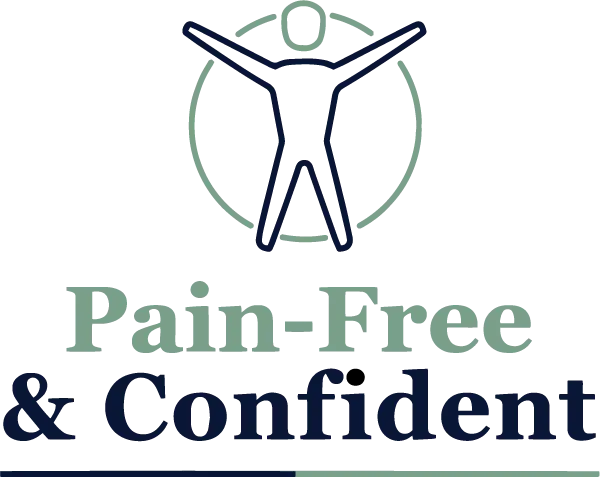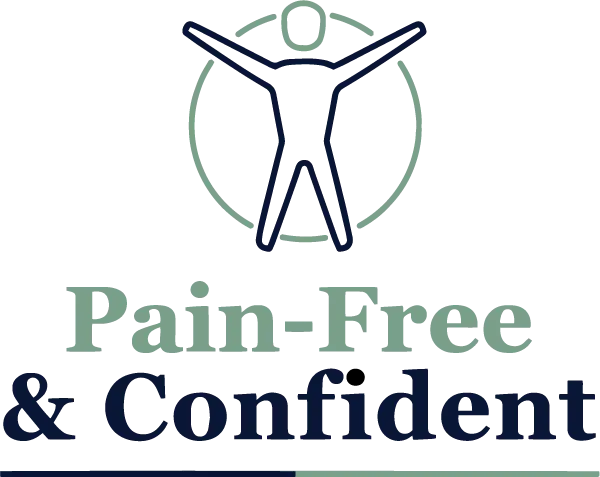Reducing Stress to Manage Pain
Stress and Pain
Did you know that stress can make your pain worse? When you’re stressed, your body feels threatened, which can increase your pain. Leading pain researchers agree that pain is more closely related to perceived threat than to actual tissue damage. This means that feeling stressed or anxious can actually make your pain feel worse, even if there’s no new injury. To manage your pain, it’s important to learn how to relax and reduce stress.
Mindfulness Techniques
Mindfulness is a great way to reduce stress and pain. It involves focusing on the present moment and letting go of worries about the past or future (pretty good for golf too!). You can practice mindfulness by paying attention to your breathing, noticing the sensations in your body, or simply observing your thoughts without judging them. By staying present and mindful, you can reduce your stress and lower your pain.
Deep Breathing
Deep breathing is a simple yet effective way to relax. When you’re stressed, your breathing becomes shallow and quick. Deep breathing helps slow it down and calm your mind. Here’s how to do it:
Sit or lie down in a comfortable position.
Close your eyes and take a deep breath in through your nose for a count of four.
Hold your breath for a count of four.
Exhale slowly through your mouth for a count of four.
Repeat this process several times until you feel more relaxed.
Meditation for Golfers
Meditation is another powerful tool for relaxation. It can help you calm your mind and reduce the perception of threat. For golfers, a simple meditation practice can make a big difference. Here’s how to start:
Find a quiet place where you won’t be disturbed.
Sit comfortably with your back straight (lie down if it’s more comfortable)
Close your eyes and take a few deep breaths.
Focus on your breath as it comes in and goes out.
If your mind wanders, gently bring your focus back to your breath.
Start with just a few minutes a day and gradually increase the time as you get more comfortable.
Progressive Muscle Relaxation
Progressive muscle relaxation (PMR) is a technique that helps you relax your muscles and reduce tension. Here’s how to do it:
Sit or lie down in a comfortable position.
Close your eyes and take a few deep breaths.
Start with your feet and slowly tense the muscles as much as you can.
Hold the tension for a few seconds, then relax the muscles completely.
Move up to your calves, thighs, abdomen, chest, arms, and face, tensing and relaxing each muscle group.
Enjoy the feeling of relaxation throughout your body.
Creating a Relaxation Routine
Having a regular relaxation routine can help you manage stress and pain. Set aside time each day for relaxation activities like deep breathing, meditation, or PMR. This routine can help you stay calm and reduce the perception of threat, which can lower your pain.
Putting It All Together
Relaxing is essential for managing pain. By reducing stress, you can lower your perception of threat and improve your pain levels. Techniques like mindfulness, deep breathing, meditation, and progressive muscle relaxation can help you relax and feel better.
Tools to Help You Relax
To make relaxation easier, here are some tools you can use:
Relaxation Apps: There are many apps available that guide you through relaxation techniques and meditation.
Soothing Music: Listening to calming music can help you relax and reduce stress.
Comfortable Environment: Create a comfortable space for relaxation with soft lighting, comfortable seating, and minimal distractions.
Tips for Success
- Be Consistent: Practice relaxation techniques regularly, even on days when you feel good.
- Find What Works: Try different relaxation methods and see what works best for you.
- Be Patient: It might take time to feel the benefits of relaxation. Keep practicing, and you’ll see improvements.
Sharing Your Relaxation Practice
When you visit your doctor or therapist, share your relaxation techniques with them. They can provide additional tips and help you refine your practice. They might also suggest other techniques that can help you manage your pain.
Why Relaxation Matters
Relaxation is important because it helps reduce the stress that can make your pain worse. By lowering your stress levels, you can reduce the perception of threat and improve your pain. This knowledge gives you power. You can make informed choices about how to manage your stress and pain, and it helps your healthcare team provide the best care for you.
Stay Positive
Relaxing can sometimes be challenging, especially when you’re in pain. But remember, every small step counts. Celebrate the small victories, like a moment of calm or a day with less pain. Each step forward is progress.
Conclusion
Relaxing is one of the 6 key practices for overcoming persistent lower back pain. By reducing stress through mindfulness, deep breathing, meditation, and progressive muscle relaxation, you can take control of your pain. This will help you play golf and enjoy other activities with confidence and less pain. Keep at it, and remember that each small step brings you closer to a pain-free life.

Gavin Routledge
Relax
Reducing Stress to Manage Pain
Stress and Pain
Did you know that stress can make your pain worse? When you’re stressed, your body feels threatened, which can increase your pain. Leading pain researchers agree that pain is more closely related to perceived threat than to actual tissue damage. This means that feeling stressed or anxious can actually make your pain feel worse, even if there’s no new injury. To manage your pain, it’s important to learn how to relax and reduce stress.
Mindfulness Techniques
Mindfulness is a great way to reduce stress and pain. It involves focusing on the present moment and letting go of worries about the past or future (pretty good for golf too!). You can practice mindfulness by paying attention to your breathing, noticing the sensations in your body, or simply observing your thoughts without judging them. By staying present and mindful, you can reduce your stress and lower your pain.
Deep Breathing
Deep breathing is a simple yet effective way to relax. When you’re stressed, your breathing becomes shallow and quick. Deep breathing helps slow it down and calm your mind. Here’s how to do it:
Sit or lie down in a comfortable position.
Close your eyes and take a deep breath in through your nose for a count of four.
Hold your breath for a count of four.
Exhale slowly through your mouth for a count of four.
Repeat this process several times until you feel more relaxed.
Meditation for Golfers
Meditation is another powerful tool for relaxation. It can help you calm your mind and reduce the perception of threat. For golfers, a simple meditation practice can make a big difference. Here’s how to start:
Find a quiet place where you won’t be disturbed.
Sit comfortably with your back straight (lie down if it’s more comfortable)
Close your eyes and take a few deep breaths.
Focus on your breath as it comes in and goes out.
If your mind wanders, gently bring your focus back to your breath.
Start with just a few minutes a day and gradually increase the time as you get more comfortable.
Progressive Muscle Relaxation
Progressive muscle relaxation (PMR) is a technique that helps you relax your muscles and reduce tension. Here’s how to do it:
Sit or lie down in a comfortable position.
Close your eyes and take a few deep breaths.
Start with your feet and slowly tense the muscles as much as you can.
Hold the tension for a few seconds, then relax the muscles completely.
Move up to your calves, thighs, abdomen, chest, arms, and face, tensing and relaxing each muscle group.
Enjoy the feeling of relaxation throughout your body.
Creating a Relaxation Routine
Having a regular relaxation routine can help you manage stress and pain. Set aside time each day for relaxation activities like deep breathing, meditation, or PMR. This routine can help you stay calm and reduce the perception of threat, which can lower your pain.
Putting It All Together
Relaxing is essential for managing pain. By reducing stress, you can lower your perception of threat and improve your pain levels. Techniques like mindfulness, deep breathing, meditation, and progressive muscle relaxation can help you relax and feel better.
Tools to Help You Relax
To make relaxation easier, here are some tools you can use:
Relaxation Apps: There are many apps available that guide you through relaxation techniques and meditation.
Soothing Music: Listening to calming music can help you relax and reduce stress.
Comfortable Environment: Create a comfortable space for relaxation with soft lighting, comfortable seating, and minimal distractions.
Tips for Success
- Be Consistent: Practice relaxation techniques regularly, even on days when you feel good.
- Find What Works: Try different relaxation methods and see what works best for you.
- Be Patient: It might take time to feel the benefits of relaxation. Keep practicing, and you’ll see improvements.
Sharing Your Relaxation Practice
When you visit your doctor or therapist, share your relaxation techniques with them. They can provide additional tips and help you refine your practice. They might also suggest other techniques that can help you manage your pain.
Why Relaxation Matters
Relaxation is important because it helps reduce the stress that can make your pain worse. By lowering your stress levels, you can reduce the perception of threat and improve your pain. This knowledge gives you power. You can make informed choices about how to manage your stress and pain, and it helps your healthcare team provide the best care for you.
Stay Positive
Relaxing can sometimes be challenging, especially when you’re in pain. But remember, every small step counts. Celebrate the small victories, like a moment of calm or a day with less pain. Each step forward is progress.
Conclusion
Relaxing is one of the 6 key practices for overcoming persistent lower back pain. By reducing stress through mindfulness, deep breathing, meditation, and progressive muscle relaxation, you can take control of your pain. This will help you play golf and enjoy other activities with confidence and less pain. Keep at it, and remember that each small step brings you closer to a pain-free life.

Gavin Routledge
Our Mission
Our mission is to empower the world’s golfers to build a strong pain-free lower back they can have confidence in, and to optimise their health so that they can look forward to golfing into their 90s.
CONTACT INFORMATION
10 Atholl Place Edinburgh EH3 8HP


